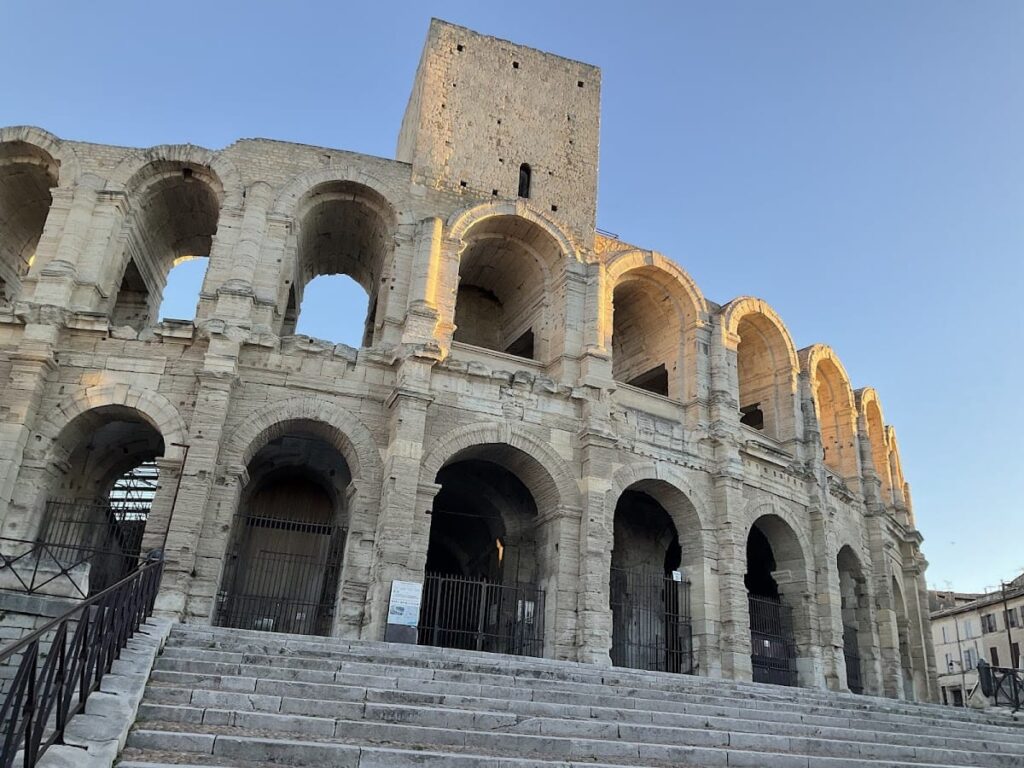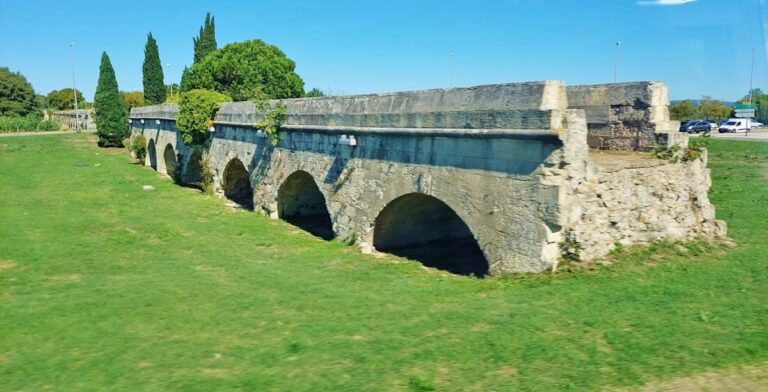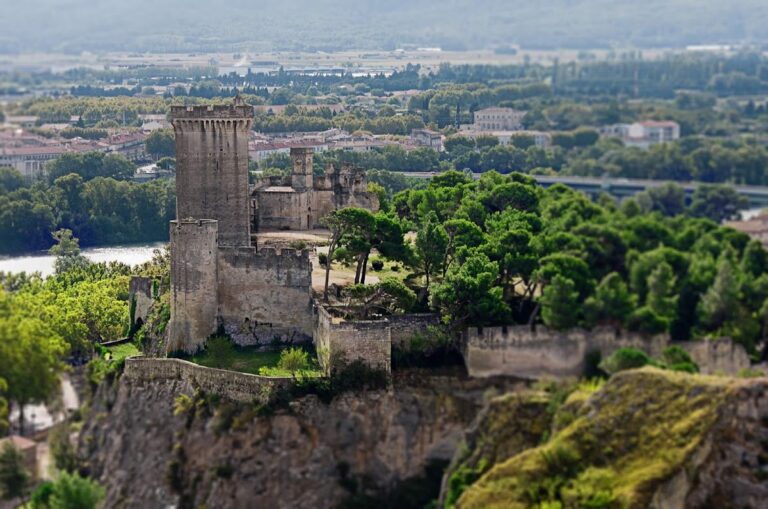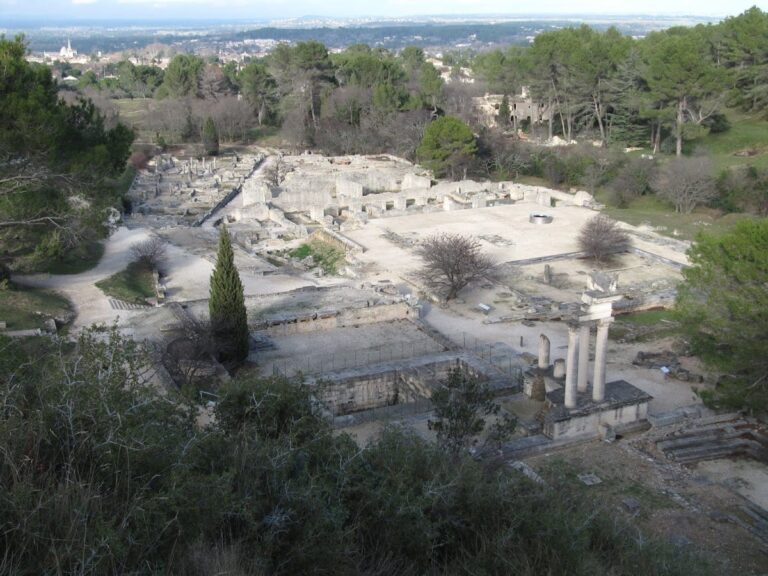Roman Theatre of Arles: An Ancient Performance Venue in Southern France
Visitor Information
Google Rating: 4.4
Popularity: Medium
Google Maps: View on Google Maps
Official Website: arlestourisme.tickeasy.com
Country: France
Civilization: Roman
Remains: Entertainment
History
The Roman Theatre of Arles is located in the city of Arles, within the Provence region of southern France. It was built by the Romans shortly after the establishment of the Roman colony of Arles, known as Arelate, during the late 1st century BCE. Construction began around 40 to 30 BCE and was completed by approximately 12 BCE under Emperor Augustus, reflecting the colony’s early importance in the Roman Empire.
During the Roman period, the theatre served as a venue for various performances, including Roman and Greek tragedies, comedies, mimes, and pantomimes. These events were often held during religious festivals dedicated to the gods. Unlike many Greek theatres dedicated to Dionysus, this theatre was dedicated to Apollo, a god favored by Augustus. The theatre was generally open to the public free of charge, though some performances restricted attendance to men, requiring women and children to be accompanied by adult males.
In the mid-4th century CE, Emperor Constantius II is recorded to have organized a grand spectacle at the theatre on October 10, 353 CE. The theatre remained active until the early 5th century CE. After this period, the rise of Christianity led to the decline of pagan entertainment. The Christian Church repurposed the site as a quarry, using its stones to build the paleochristian basilica of Saint-Étienne under Bishop Hilary.
Between the late 6th and early 8th centuries, part of the theatre’s structure was adapted for defensive purposes. One of its walls was reinforced and incorporated into the city’s fortifications, including the construction of a defensive tower known as the “Tour de Rotland.” Over the following centuries, the area around the theatre was subdivided for housing, religious communities such as the Jesuits and Sisters of Mercy, and private mansions.
Interest in the theatre’s archaeological significance began in the 17th century with the discovery of important sculptures, including the Venus of Arles. Systematic excavations started in 1828 under the direction of Baron de Chartrouse, the mayor of Arles, and continued through the 1840s, concluding around 1860. The theatre was officially classified as a historic monument in 1840 and later inscribed on the UNESCO World Heritage List in 1981.
Remains
The Roman Theatre of Arles was constructed on the Hauture hill, aligned with the city’s main east-west street, the Roman decumanus. Its design follows the typical Roman theatre layout, consisting of three main parts: the cavea (seating area), the stage platform (pulpitum), and the scaenae frons (the decorated background wall).
The cavea is semicircular with a diameter of 102 meters and originally contained 33 rows of stone seats. It could hold about 10,000 spectators. Seating was arranged by social rank, with common citizens seated in the upper tiers, while knights and prominent individuals occupied the lower tiers and the orchestra area in front of the stage.
The wooden stage platform measured approximately 50 meters long and 6 meters wide. Beneath it, substructures housed theatrical machinery used during performances. The scaenae frons was richly adorned with nearly one hundred Corinthian columns arranged in three levels. Today, only two of these columns remain, known as “the two widows.” This wall likely supported a protective awning over the stage.
Within niches of the scaenae frons were statues inspired by Greek art, including the famous Venus of Arles, a marble copy of a work by Praxiteles. This statue is now preserved in the Louvre Museum. The orchestra area still shows the imprint of an altar dedicated to swans, a symbol associated with Emperor Augustus and consecrated to Apollo.
The theatre’s external arcades, partially preserved, display a unique arrangement of three superimposed Doric orders from the late antique period. These differ from classical Roman architectural models and influenced later monuments such as the choir screen of Bordeaux Cathedral and the Château d’Uzès.
During the Middle Ages, much of the theatre’s supporting structure for the cavea was integrated into the city’s defensive walls and transformed into a fortified tower. Archaeological finds at the site include sculptures such as a bust of Augustus depicted as Apollo and the “Head of Arles,” both exhibited in the Musée de l’Arles antique.










